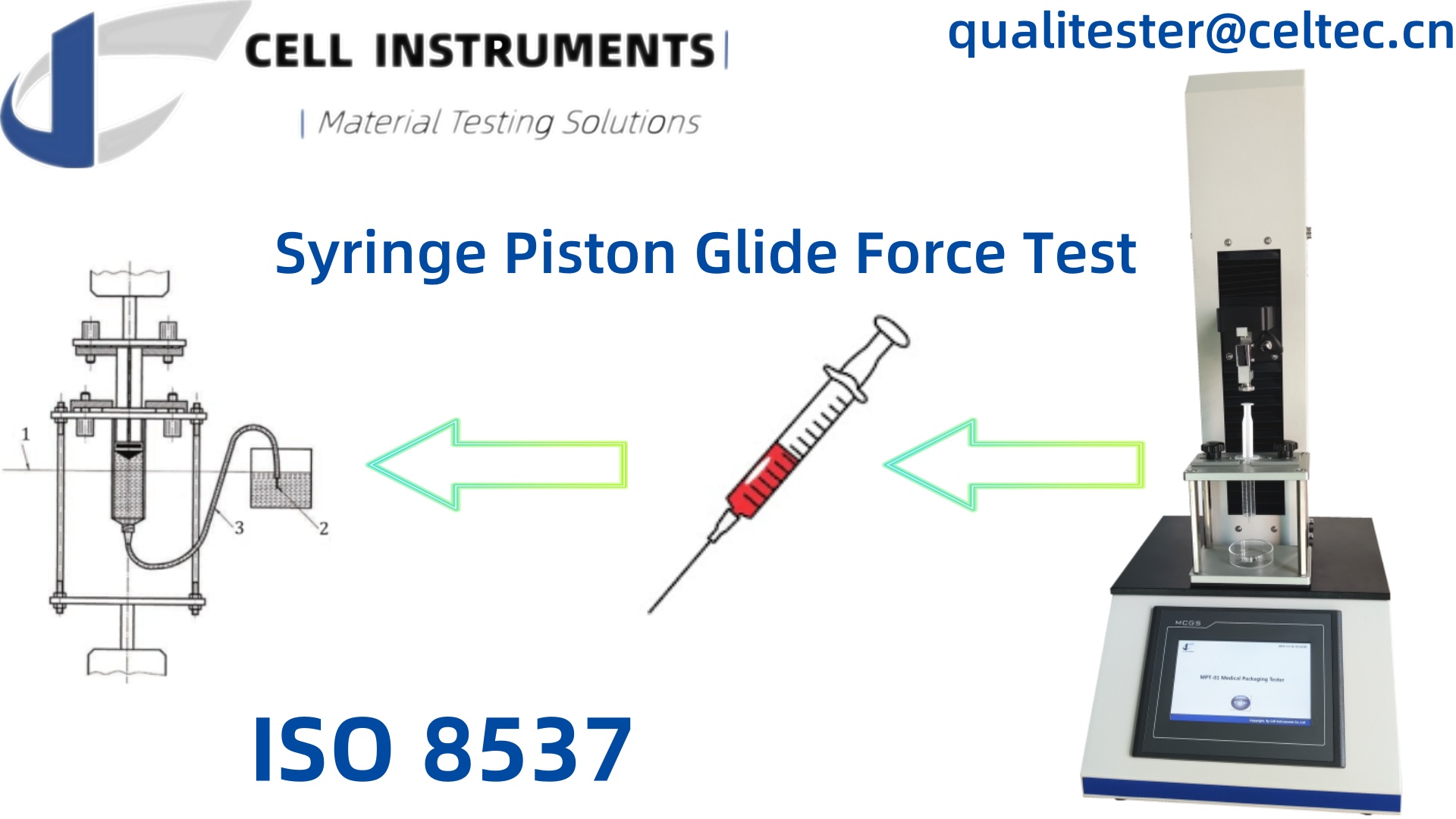The syringe piston glide force test is a critical procedure used to determine the amount of force required to move the piston inside a syringe. This test is essential in evaluating the functionality and safety of syringes, ensuring they operate smoothly and reliably when used in medical procedures. By assessing the glide force, manufacturers can ensure their syringes meet both user expectations and international standards.
What Is the Syringe Piston Glide Force Test?
The syringe piston glide force test measures the force required to move the piston within the barrel of a syringe. This test simulates real-life conditions where the syringe is used to withdraw or inject fluids. The force exerted by the user must be within acceptable limits to ensure that the syringe functions properly during its use.
The test involves filling a syringe with a specific amount of water and then applying a force to the plunger. The force required to initiate piston movement, as well as the maximum force required during the entire stroke, is recorded. The results of this test are critical because they directly impact the syringe’s usability, ensuring that the piston can be moved smoothly without excessive resistance, which could cause discomfort or errors during medical procedures.
The Importance of Syringe Piston Glide Force Testing
Syringe piston glide force testing is crucial for the following reasons:
- User Safety: If the piston is too difficult to move, it could cause discomfort to the user or result in improper dosing of fluids. Ensuring that the glide force is within a specified range guarantees that the syringe can be used comfortably and efficiently.
- Seguro de calidad: This test is part of a broader quality assurance process to verify that syringes meet international standards. It ensures that the piston’s movement is consistent and within the required specifications for medical use.
- Cumplimiento normativo: The syringe piston glide force test helps manufacturers meet various global regulatory requirements, such as ISO 8537 and USP 382. These standards dictate the acceptable glide force levels to ensure the safety and functionality of syringes.
ISO 8537 and the Breakaway Force Test for Syringes
ISO 8537 is a crucial standard that specifies the testing requirements for syringes, including the breakaway force test. The breakaway force is the initial force required to overcome the friction between the piston and the barrel before the piston begins to move. This force is critical in determining the ease with which the syringe operates.
ISO 8537 Guidelines for Syringe Glide Force Testing
ISO 8537 provides detailed guidance on the proper procedure for conducting the syringe piston glide force test, including the equipment required and the acceptable force thresholds. The standard outlines the following steps:
- Syringe Preparation: Fill the syringe with a defined amount of distilled water (typically 50% of its nominal capacity).
- Configuración de prueba: Attach the syringe to a mechanical testing machine that is capable of applying a vertical downward force to the plunger while simultaneously measuring the force.
- Medición de fuerza: Gradually apply force to the plunger and record the force required to initiate piston movement, as well as the maximum force required to depress the piston completely.
This standardized procedure ensures consistent and accurate testing across different syringe types and manufacturers.
How the MST-01 Syringe Tester Ensures Reliable Results
The MST-01 Medical Syringe Tester from Cell Instruments is an ideal solution for conducting syringe piston glide force tests. This advanced testing machine is designed to precisely measure the forces required to operate a syringe piston, ensuring compliance with industry standards like ISO 8537, USP 382, and ISO 7886-1.
Key Features of the MST-01 Syringe Tester
- Accurate Force Measurement: The MST-01 offers precise force measurement with an accuracy of 0.5% of the full scale, ensuring reliable results for glide force tests.
- Interfaz fácil de usar: The tester features a 7-inch HMI touchscreen, making it easy to configure and operate.
- Multiple Test Programs: In addition to glide force testing, the MST-01 can perform other essential tests such as liquid leakage and plunger pull-out tests.
- Versátil y personalizable: The MST-01 is equipped with various clamps and fixtures, allowing for flexibility in testing different syringe models.
By using the MST-01 Syringe Tester, manufacturers can ensure that their syringes meet the necessary glide force requirements, improving both product quality and user safety.
Conclusión
The syringe piston glide force test is a vital part of ensuring that medical syringes are safe and functional. By following standards like ISO 8537 and using advanced testing equipment such as the MST-01 Syringe Tester, manufacturers can guarantee that their syringes operate smoothly and comfortably, providing patients with reliable and effective medical devices.
FAQ: Syringe Piston Glide Force Test
1. Why is the syringe piston glide force test important?
- The test ensures that the syringe operates smoothly and safely, preventing discomfort or errors during medical use.
2. What is the role of ISO 8537 in syringe testing?
- ISO 8537 provides the guidelines and standards for syringe testing, including the measurement of glide force and breakaway force.
3. How is the breakaway force measured?
- The breakaway force is measured by applying a vertical force to the syringe plunger until the piston begins to move, recording the initial force required.
4. How does the MST-01 Syringe Tester help in glide force testing?
- The MST-01 provides precise measurements and supports multiple syringe testing programs, ensuring compliance with international standards.
5. Can the MST-01 test different types of syringes?
- Yes, the MST-01 is versatile and can be customized with different clamps to test various syringe models.
Producto relacionado
Comprobador de fuerza de deslizamiento del émbolo de la jeringa
Artículo relacionado
Prueba de fuerza de desprendimiento de jeringa
Prueba de fuerza de deslizamiento de la jeringa


